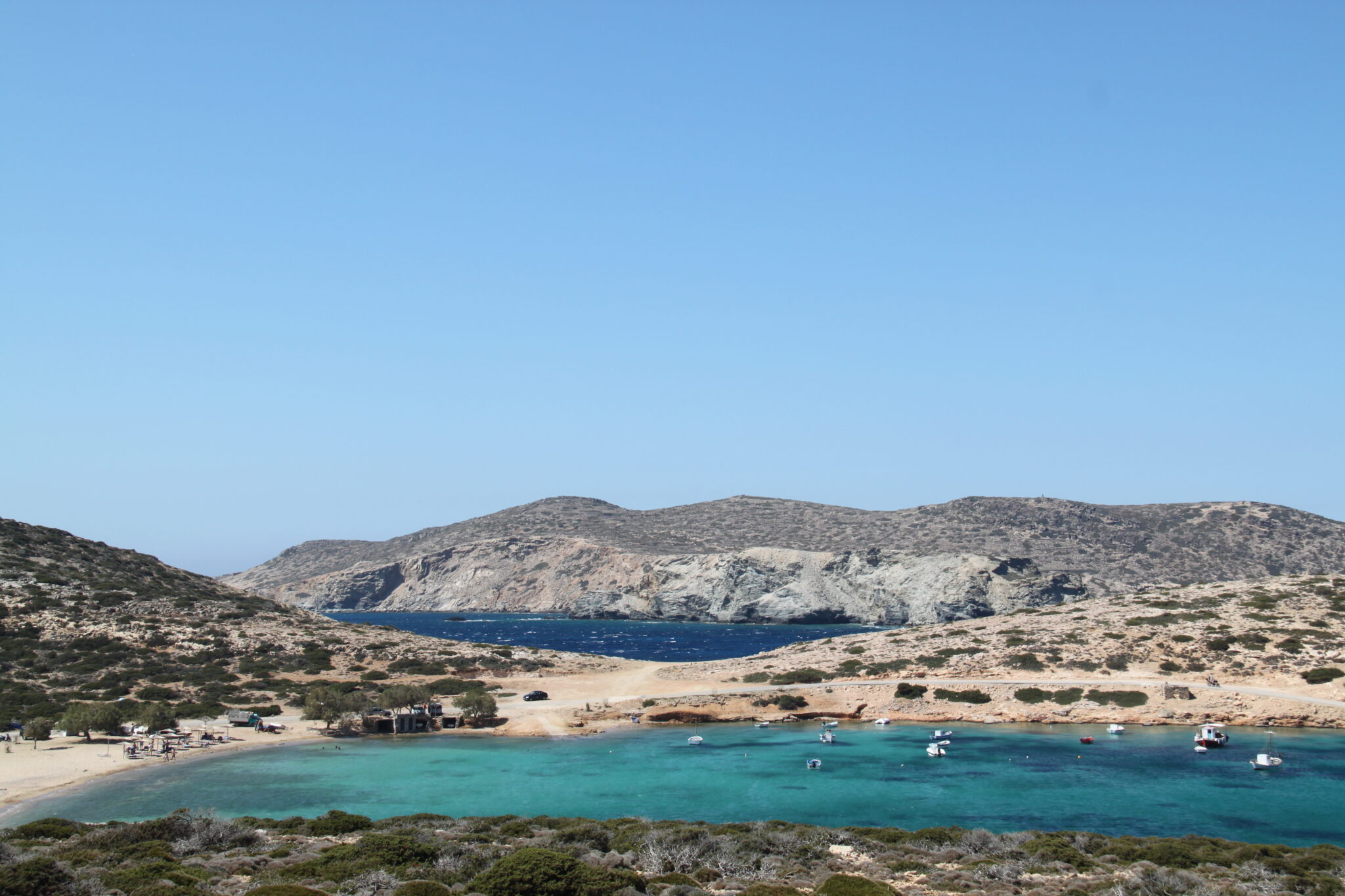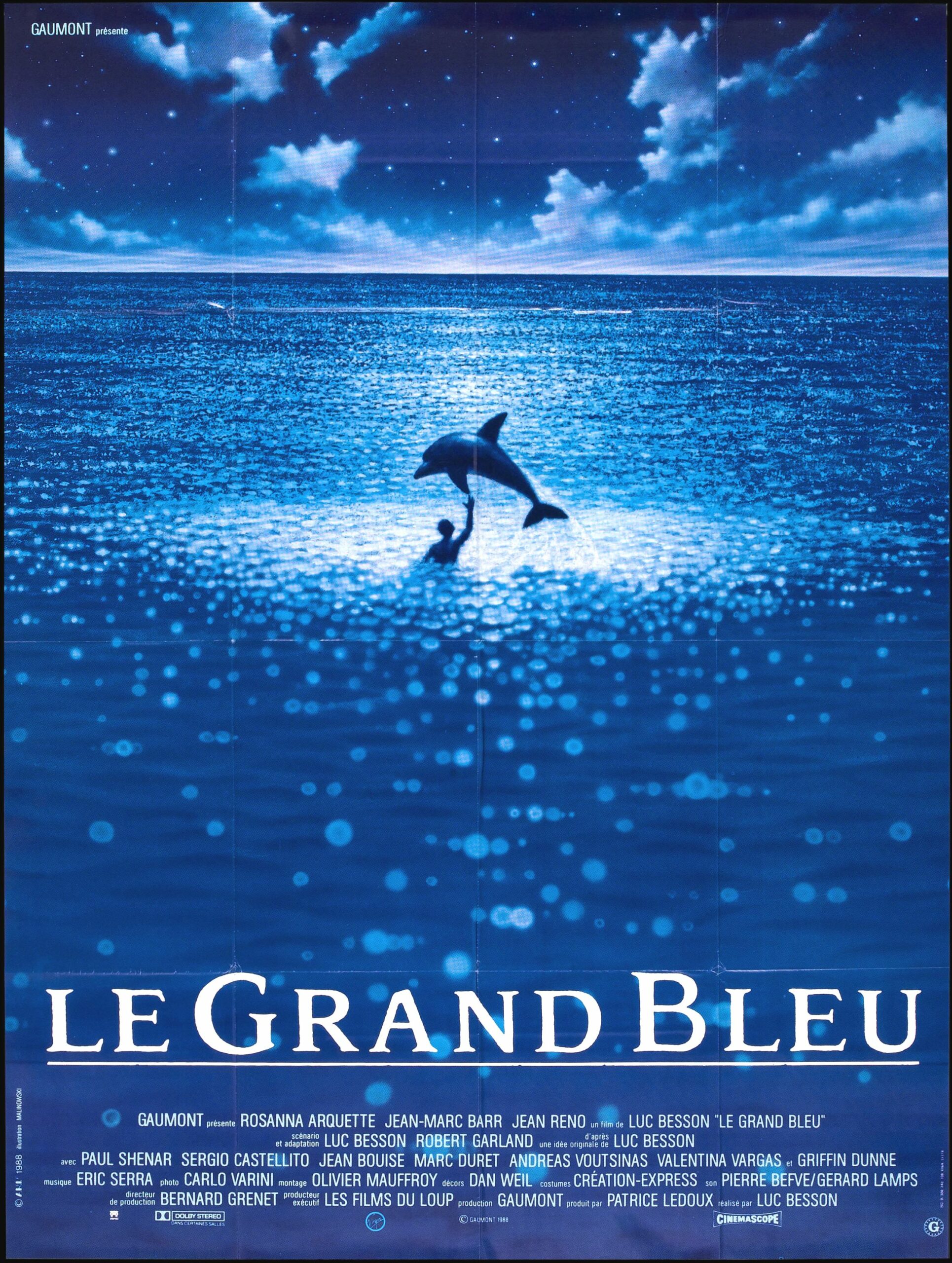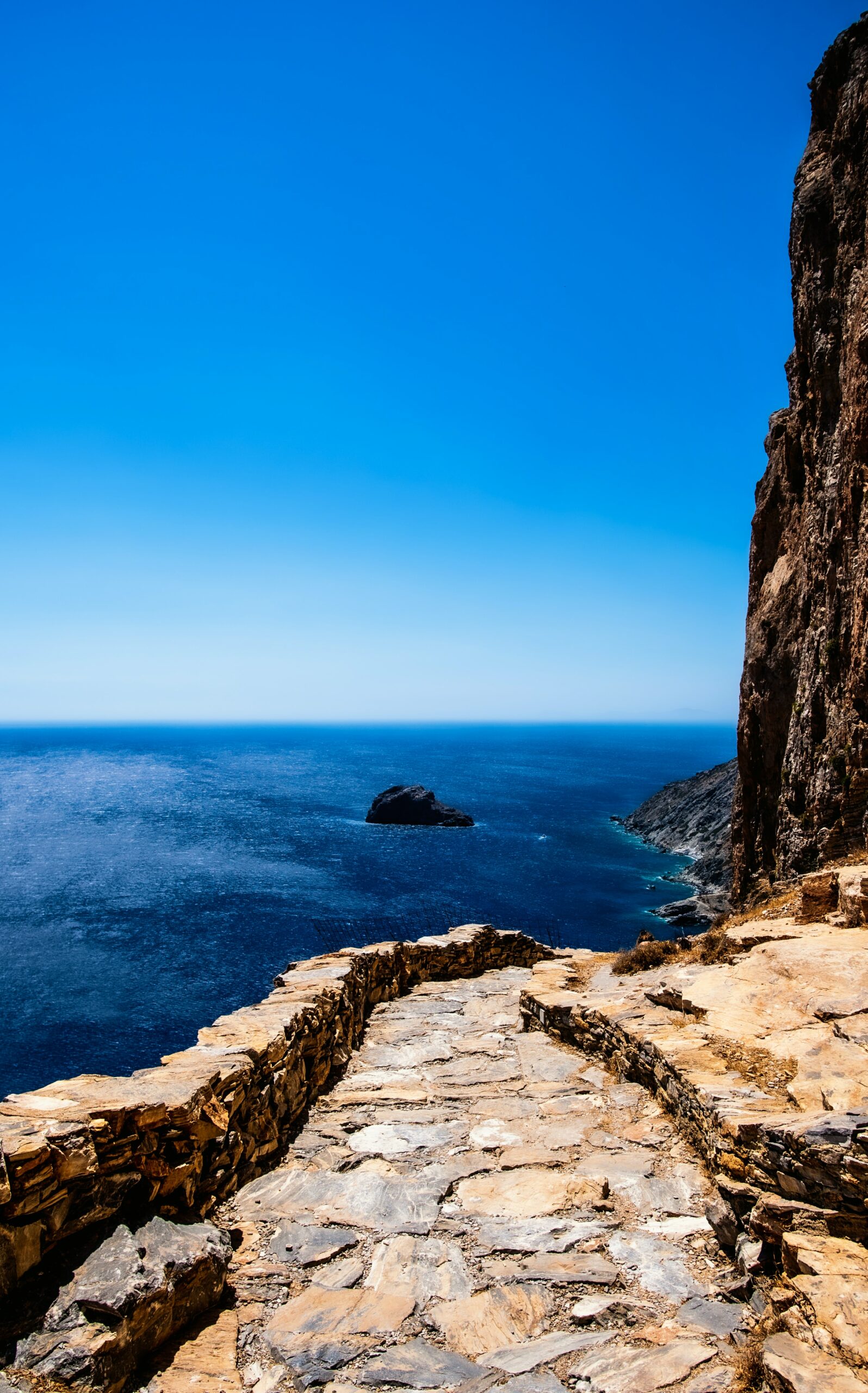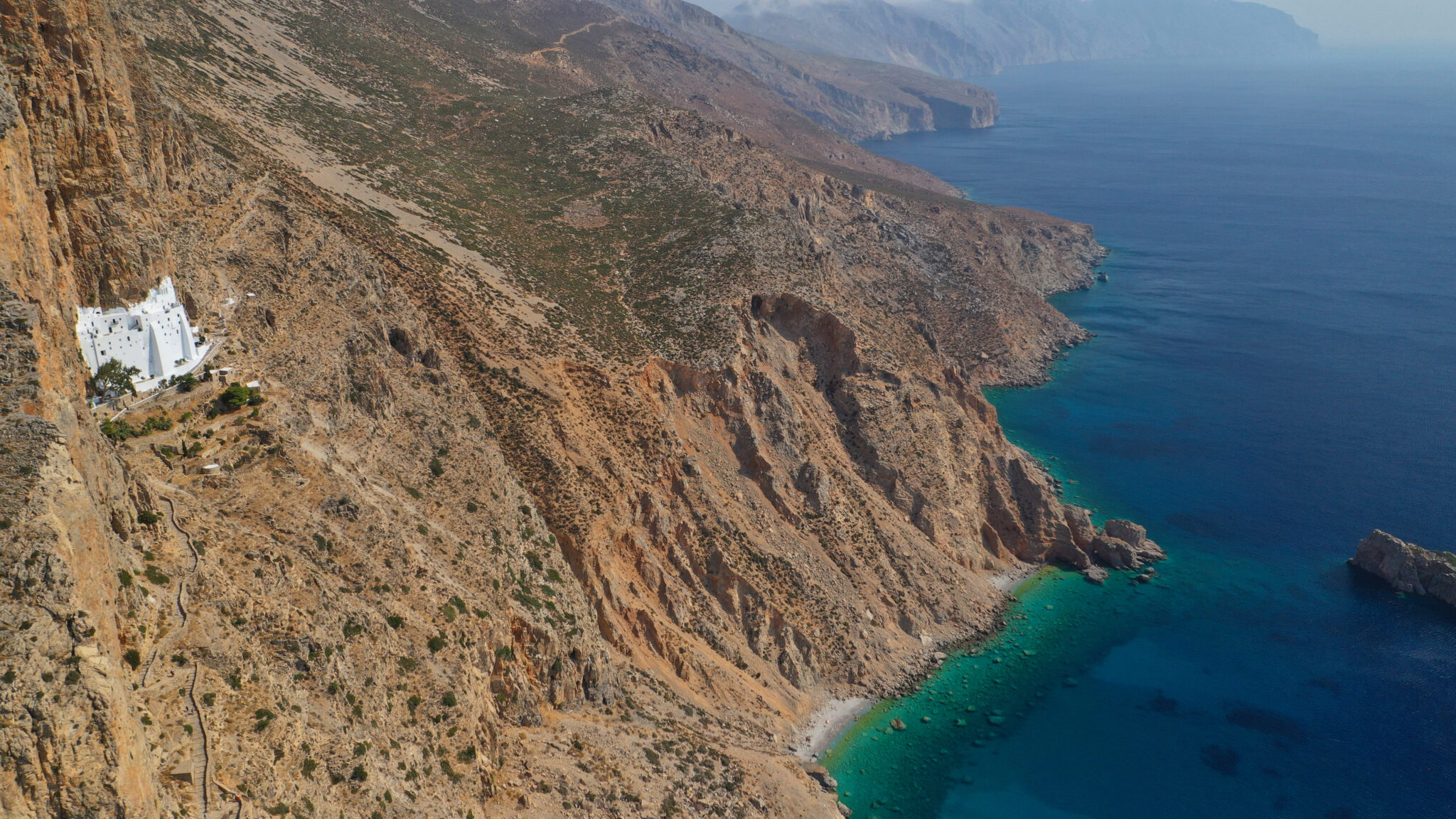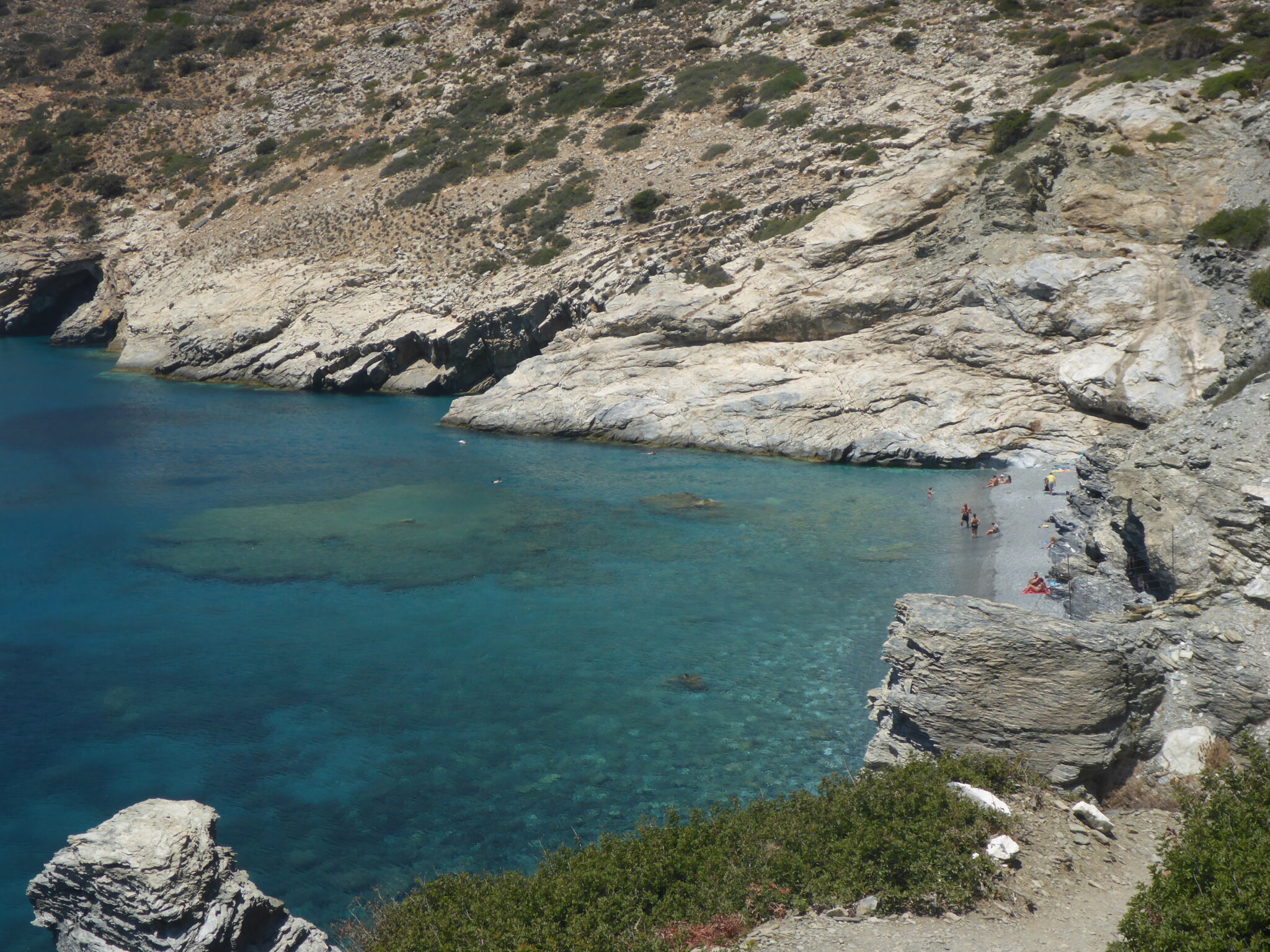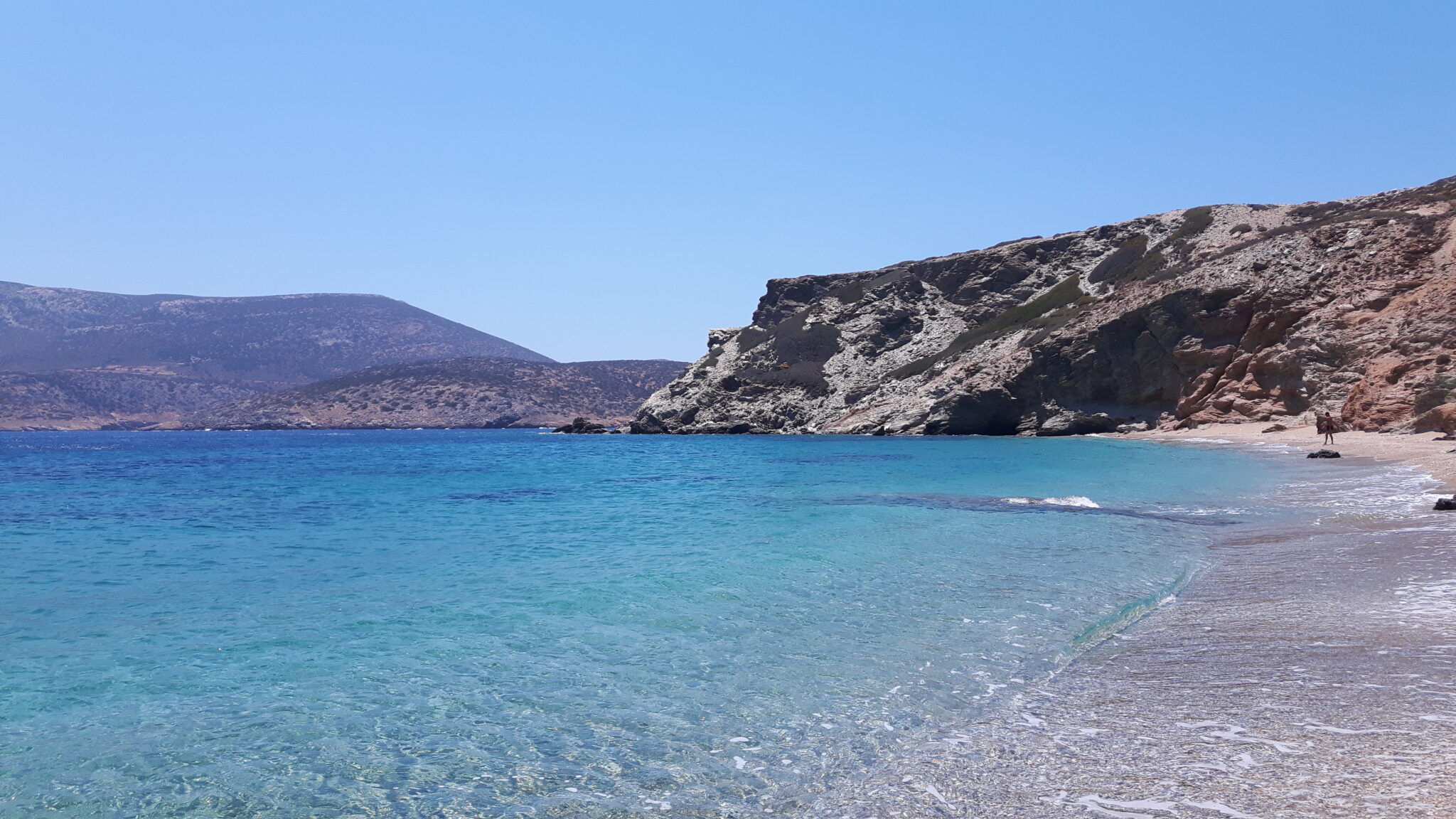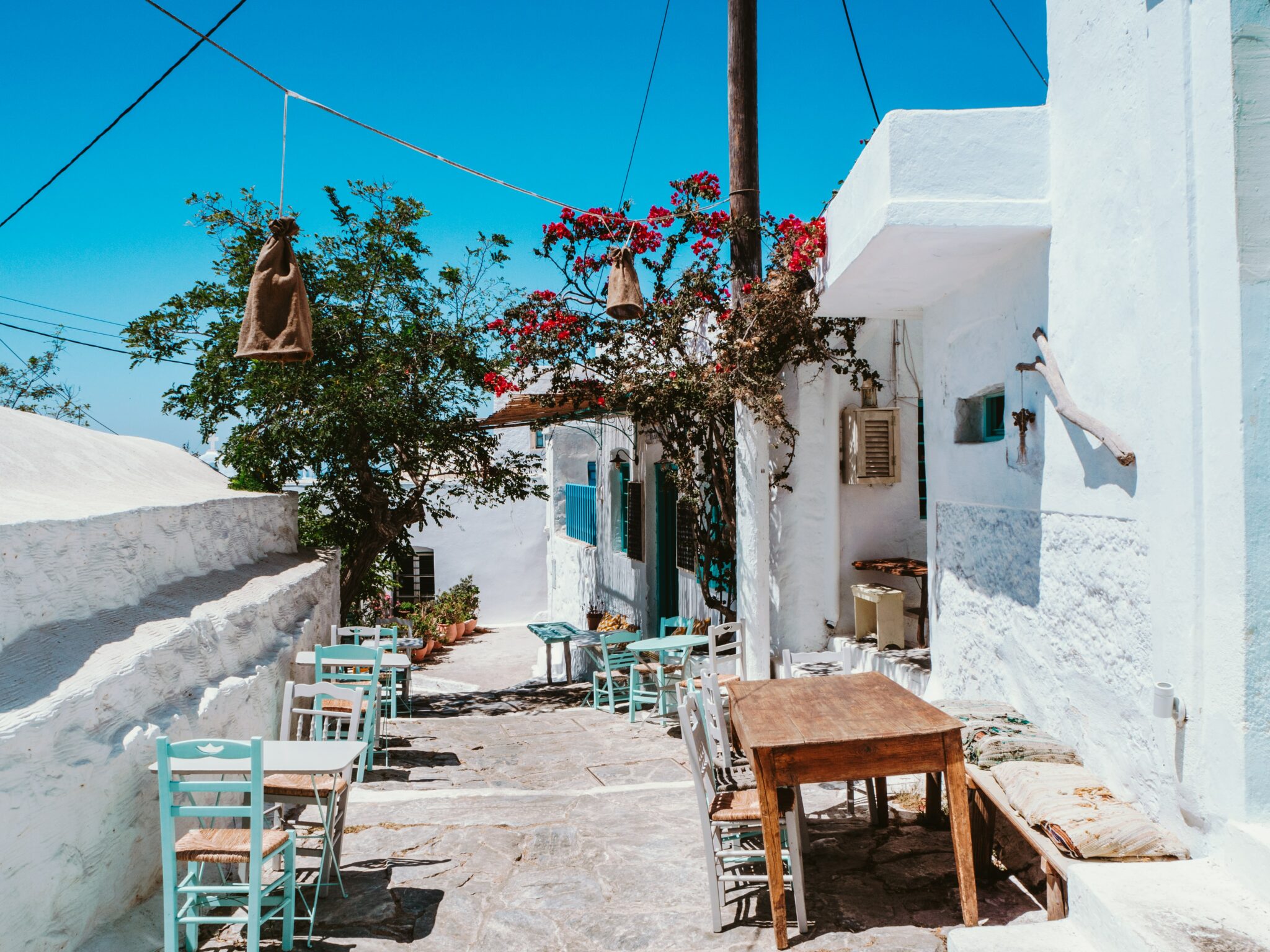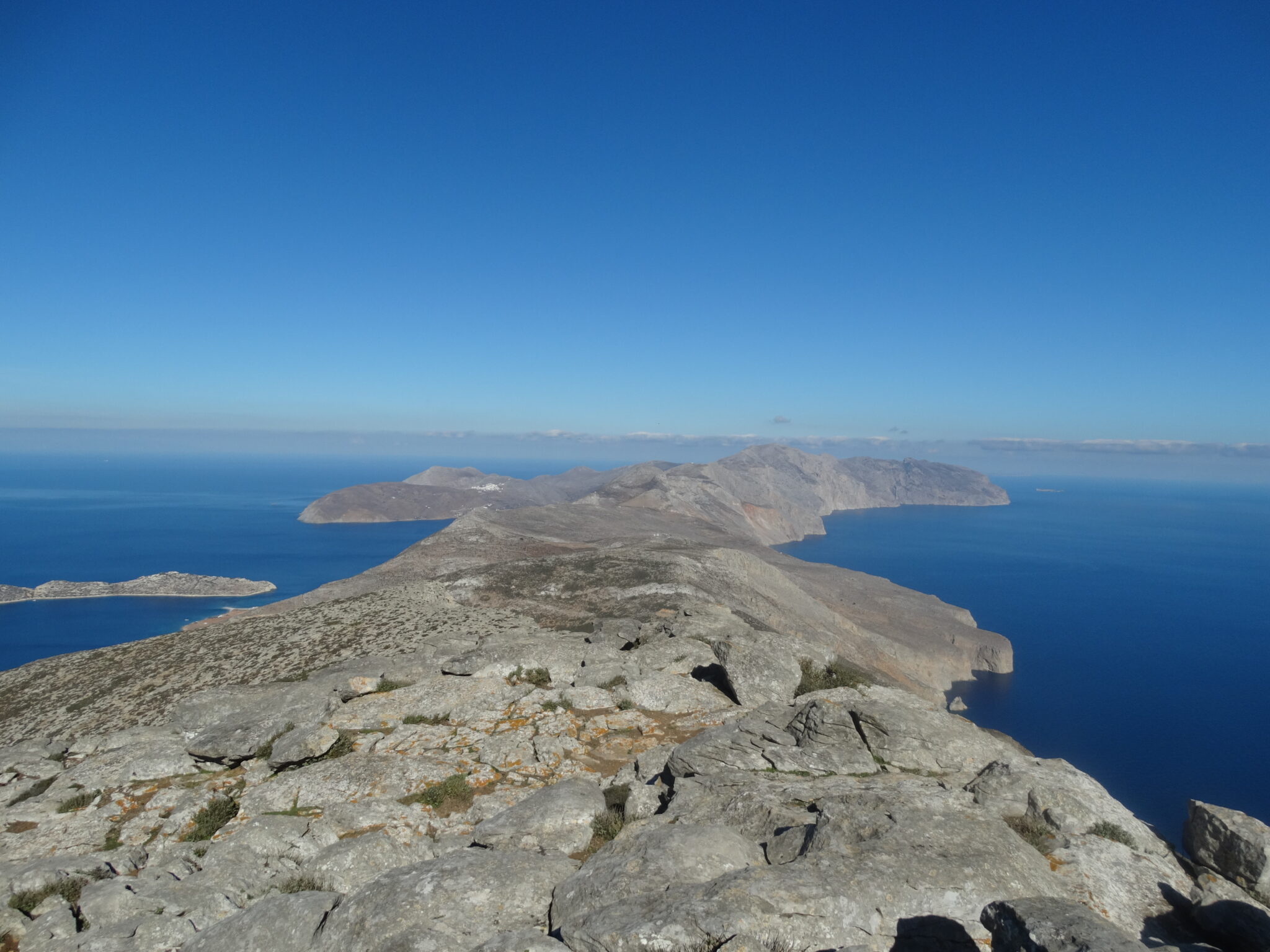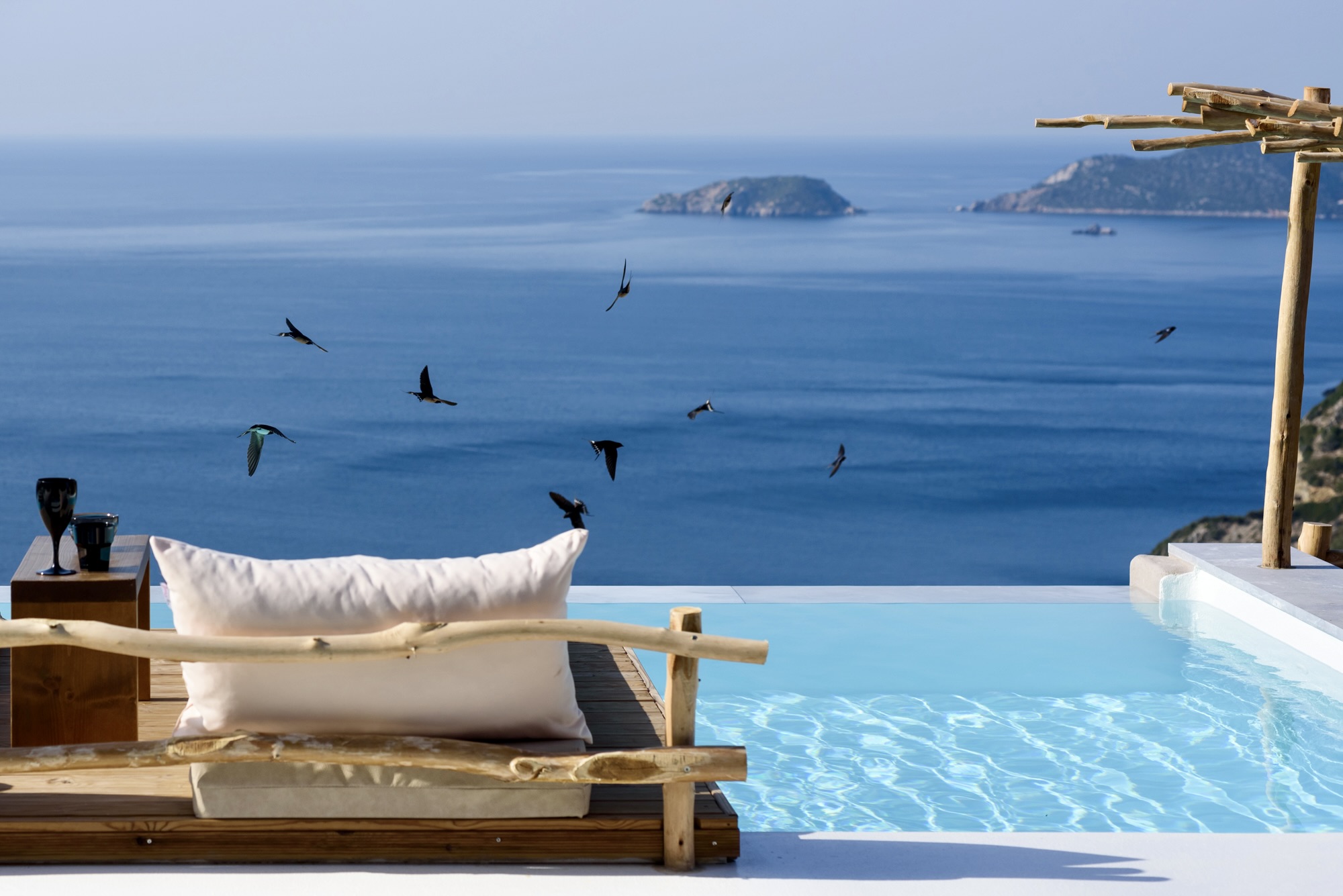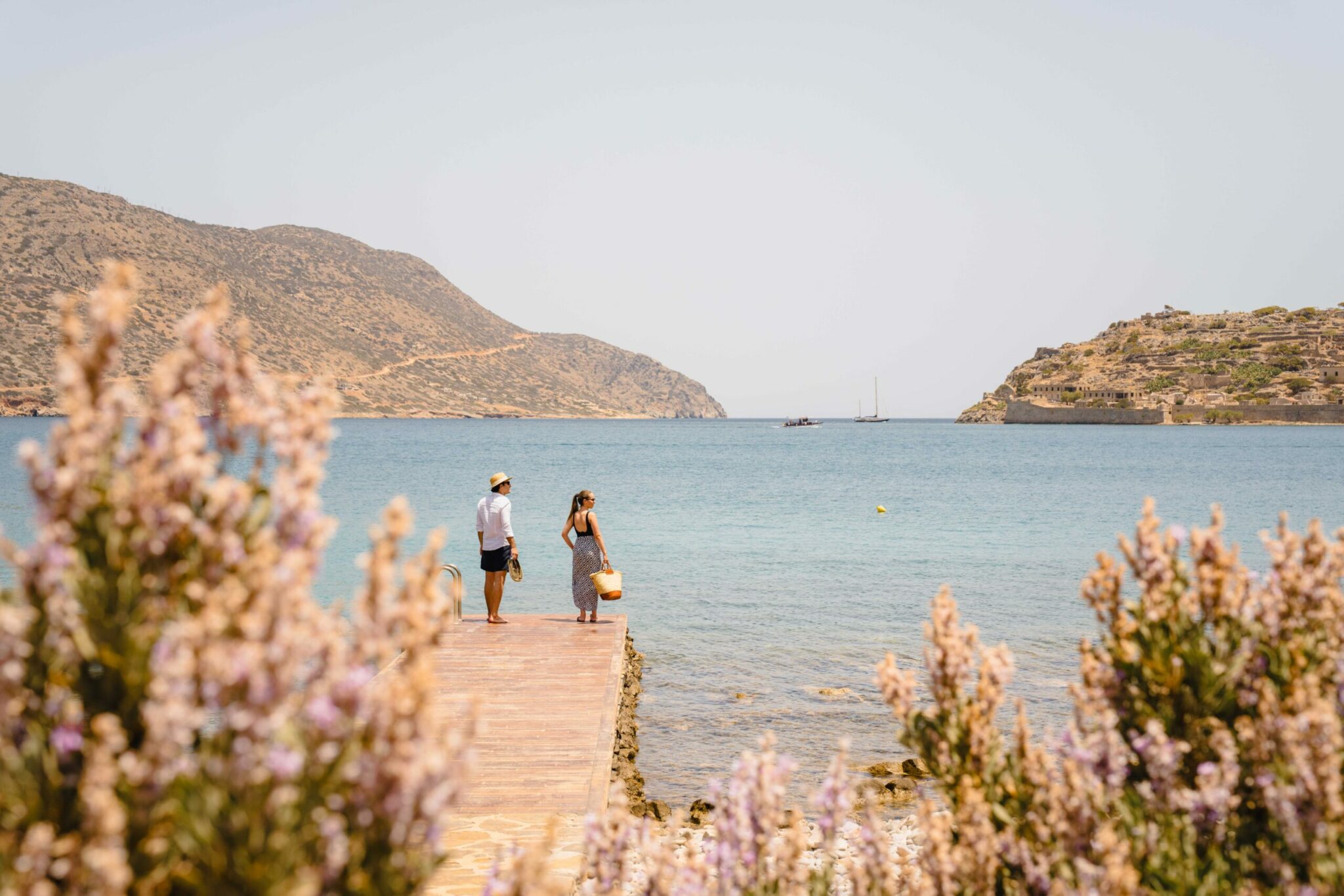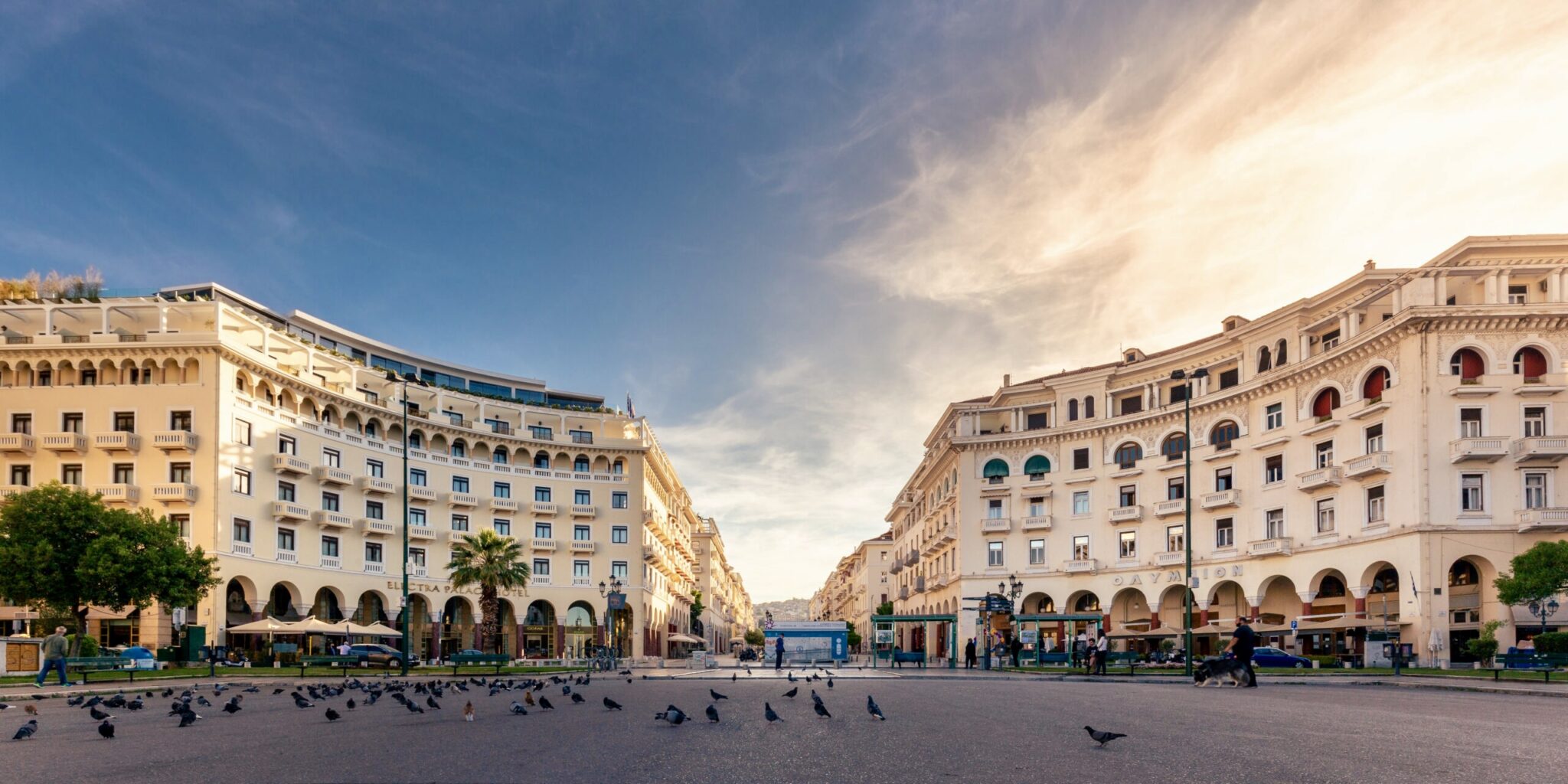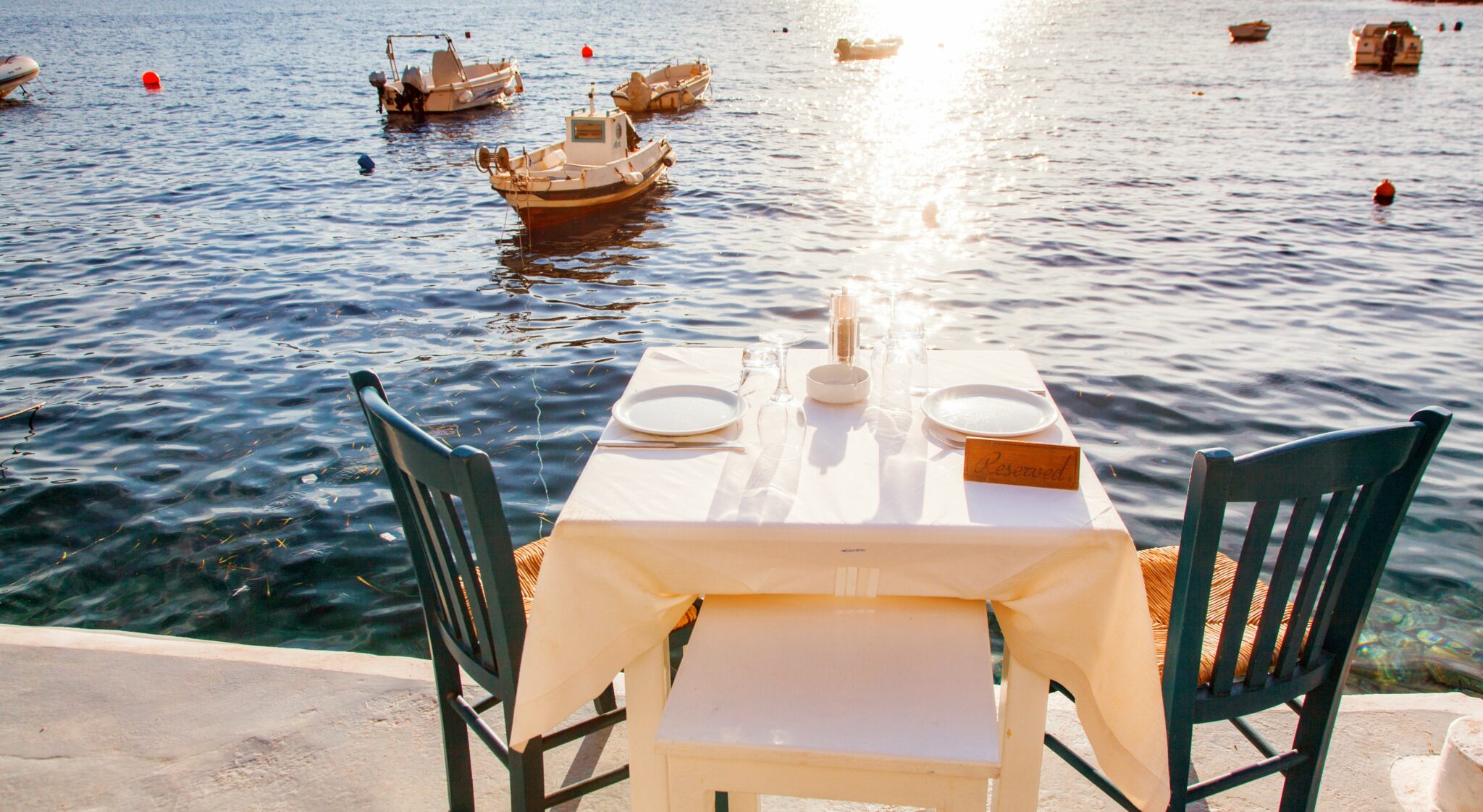It has been 33 years since July 1, 1988, when the French film “Le Grand Bleu”, directed by the great Luc Besson, was released. Only part of it may have been shot in Amorgos, but it was enough to put the island on the European tourist map, creating a wave of arrivals from France that was to become a tradition that still lives on: For three decades, the French have been an enduring driving force of the island’s tourism.
Last June, the port of Katapola was thronged with the film crew of another production. It was the German-produced film “Tochter”, which completed a series of scenes focusing on Aegiali and Nikouria, the islet opposite the second port of Amorgos. Whether this new film will increase German tourism to the island remains to be seen, but it is an event that reminded everyone of the “wild beauty” cliché that bears, if anything, a literal relation to the morphology and psyche of Amorgos.
At the beginning of spring, the discussions and forecasts on the island were not particularly auspicious. In recent years, Amorgos has been displaying its usual dynamics: Scandinavian and French visitors in June, fans of the island’s ridge trails; Italians and Germans in July; Greeks in August; “a little bit of everything” in September.
June, however, kicked off unpredictably. The ship’s hatches would open and to everyone’s surprise, the travellers would speak Greek. Perhaps it was the first June Amorgians saw Greeks arriving on the island so early, in order to shake off a year’s lockdown and live as many days as possible on a budget. A getaway to an island that has three campsites, that conveys the feeling of being on the edge of nowhere and that has managed over time to combine its unbridled side with the elegant, traditional essence that the aesthetically careful development of Hora –the main town on the island- has given it.
The great hit of June was followed by the most successful July in recent years. Today, Amorgos is full. August is already breaking all records and setting the stage for the years to come.
Estimates suggest that there are more than 7000 to 8000 visitors at the moment on the island; an island that, had it had the capacity, could easily accommodate twice that number of people. At the same time, September looks set to be of serious interest to the island’s entrepreneurs, especially the younger ones, who in recent years have shown a willingness to upgrade the quality of their services.
Even October will be interesting for the island. A new French film production starts shooting in Amorgos on October 6 for the film “Cyclades“, following the development that comes ” from outside” on an island that has never made the effort to develop its tourism industry from within.
However, the development of Kato Meria, the remote south-eastern side of Amorgos, thanks to younger entrepreneurs who follow the current of Authenticity, is remarkable. Until recent years, visiting the area was all about hitting the beach of Mouros, which rightly draws the crowds every year. Notably this year, the beach is said to fill up before 11am.
Quaint little taverns are the new exciting discovery in Kato Meria. The latter is considered the most authentic side of the island, where locals still grow their own produce and supply the few taverns in the area. Today, there is a long wait in these taverns from visitors who want to enjoy this more simple, yet meaningful experience.
Meanwhile, Hora is ideal for wonderful afternoon strolls and especially at this time of day it is bustling with life, while the port of Katapola is steadily increasing in value. Aegiali remains the liveliest and most relaxed part of the island.
All the same, although Amorgos is teeming with tourism, you can only enjoy half of the island, as the south side is not accessible by car. The adventurous that are willing to walk for hours or rent a boat can enjoy the view below the Monastery of Panagia, but also the stunningly beautiful bay of Sparti and other less known beaches.
Info about Amorgos: www.insideamorgos.com



